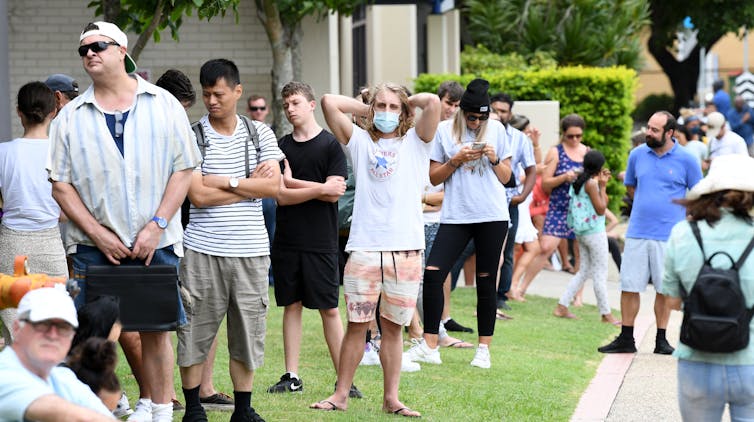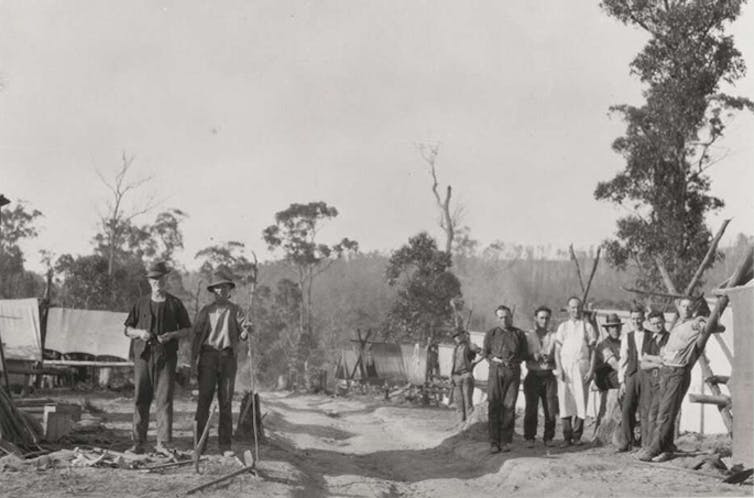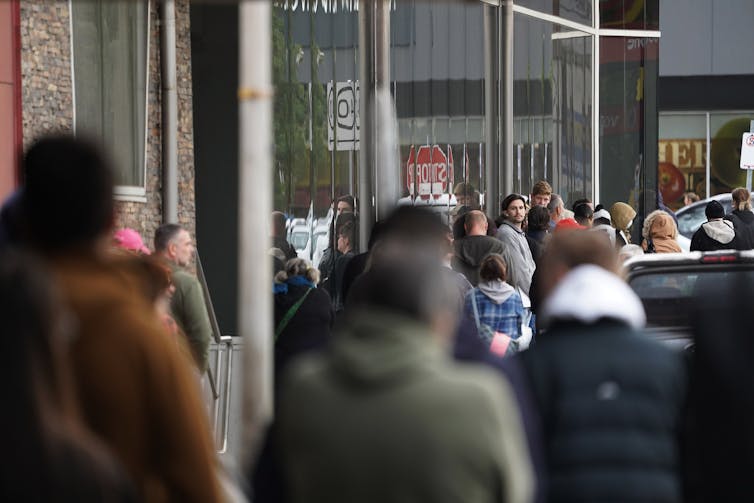Australia has been stigmatising unemployed people for almost 100 years. COVID-19 is our big chance to change this
- Written by Elise Klein, Senior Lecturer, Australian National University
Australia is facing one of its biggest crises in unemployment since the Great Depression, and yet already, extra COVID-19 supports to the unemployed are being wound back.
From today, the conditions around JobSeeker payment will get tougher for all job seekers, apart from those in Victoria. Come Christmas time, it’s possible people on the unemployment payment could be back to a meagre $40-a-day payment.
Read more: The compromise that might just boost the JobSeeker unemployment benefit
This is counterproductive and counterintuitive. But unfortunately, it is not surprising.
Australia has a long history of viewing unemployment as some sort of moral failing that needs to be punished, rather than supported.
The current situation
JobSeeker - and its predecessor, Newstart - has not increased in real terms since 1994. Business, community groups and researchers are among the consistent chorus pushing for a significant boost to the payment which, on average, is about A$40 a day.
 Almost one million Australians have lost their jobs since the start of COVID-19.
Dan Peed/ AAP
Almost one million Australians have lost their jobs since the start of COVID-19.
Dan Peed/ AAP
When COVID-19 hit, JobSeeker recipients were given an additional $550 payment per fortnight. But as we learned in last month’s economic update, this will reduce to $250 per fortnight come September 25. There is no certainty about what will happen after December 31.
Meanwhile, mutual obligation requirements are re-starting from today. This means Australians who are out of work will be asked to submit up to four job applications and will be penalised if they refuse a suitable job.
While these requirements do not apply to people in Victoria, it comes amid high unemployment rates around the country. The July jobs figures showed about one million Australians were unemployed. A further 250,000 people are now expected to be stood down Victoria due to the stage 4 restrictions.
According to recent estimates, there is only one job advertised for every 13 people on JobSeeker or Youth Allowance. Even well before the COVID-19 crisis, there was only one job for every eight people.
JobSeeker and the ‘impediment’ to finding work
When asked in late June about the level of JobSeeker, Prime Minister Scott Morrison warned generous payments could stop people finding jobs (even if the jobs don’t exist).
What we have to be worried about now is that we can’t allow the JobSeeker payment to become an impediment to people going out and doing work, getting extra shifts.
The sentiments expressed here go to the very heart of the problem with Australia’s attitudes towards unemployment payments - the belief social support needs to compel people into paid work. This means welfare is crafted as a deterrent against people in need.
The government’s frequent use of terms like “welfare dependency,” brand unemployment as a failure of the individual, not the economy. It also overlooks the vast number of Australians who do not receive JobSeeker Payment, but are dependant on government support with lucrative tax concessions for things like superannuation funds, business tax breaks and negative gearing.
Australia’s long history of blaming the unemployed
To fully understand our approach to unemployment, however, we need to look back in time. Australia has a long history of viewing unemployed people as somehow at fault.
Read more: How to get both JobKeeper and JobSeeker
During the Great Depression, sustenance or “susso” was given to the unemployed in the form of either a payment, rations or community work. Each state administered these programs differently, but the support was barely enough to survive.
The Depression was caused by Wall Street crashing and export industries suffering a downturn, with unemployment in Australia hitting a peak of 32%. But “susso” was still seen as degrading and those receiving it were portrayed as lazy or undeserving. There were newspaper reports of “huge dole frauds” threatening to “cripple” the system. The Daily Telegraph reported the case of a lazy, “chicken-eating” family, living in “luxury” on the dole.
 Unemployment reached 32% during the Great Depression.
National Museum of Australia
Unemployment reached 32% during the Great Depression.
National Museum of Australia
These views acted in part as a deterrent. Only 53% of unemployed people in NSW took sustenance payments and work during the 1930s, while in Victoria, only 23% took up this support.
‘Dole blugers’, ‘activity plans’ and frozen Newstart
In the early 1990s, Australia had the recession we “had to have”. Even though Australia had a peak unemployment rate of about 11%, the Active Employment Strategy (AES) was introduced.
This centred around the “active participation” of the unemployed. For the first time, recipients were required to sign an “activity plan” in order to receive support.
This focus on a deficiency in the unemployed (as opposed to the economy) has led scholars to view the AES as a “less social and more moral” shift in Labor’s policy.
 Job seekers have faced stricter requirements over the last 30 years.
www.shutterstock.com
Job seekers have faced stricter requirements over the last 30 years.
www.shutterstock.com
The Howard government then increased the use of “mutual obligation” - or the tasks people need to do in order to obtain welfare payments - introducing “work for the dole” in 1997. The same year, the Coalition tied Newstart to inflation - as opposed to the pension, which is tied to wages. This effectively froze the payment.
Popular support for this shift was helped by media stories of “dole bludgers” and arguments young people were “too fussy” when it came to finding work.
This general distrust of the unemployed has continued under successive Labor and Coalition governments, reinforced by austerity measures in the wake of the Global Financial Crisis. Punitive approaches to welfare, such as plans to drug test welfare recipients and the introduction of cashless debit cards, have only intensified.
It’s OK to give people adequate payments
Social security doesn’t need to be so harsh. The $550 Coronavirus Supplement has enabled people to spend money on essentials like fresh fruit, heating, medical needs and education.
Also, just because people are unemployed, it doesn’t mean they aren’t working. Unpaid work, such as care, volunteering and artistry, contributes overwhelmingly to the economy.
Providing adequate, non-punitive welfare support doesn’t stop people from trying to get jobs when they are available, either. In the 1970s, Canada’s Negative Income Tax trials showed only a small decrease in labour market supply when people were given an adequate payment. The people who delayed returning to work were women re-entering the workforce after having children and young people staying longer in education.
 Paying people more welfare does not stop trying to get jobs.
Stefan Postles/AAP
Paying people more welfare does not stop trying to get jobs.
Stefan Postles/AAP
Morrison didn’t flinch in June when he announced $270 billion would be spent on missiles in the name of national security.
Yet when it comes to people’s economic security, it is so often framed as a trade-off against reducing the budget deficit. This is despite the importance of spending to help the economy recover from our current recession.
Australia has a long history of stigmatising and distrusting its unemployed. With hundreds of thousands of Australians out of work due to COVID-19, now is the chance to break with tradition by providing non-punitive and adequate income support.
Read more: Forget JobSeeker. In our post-COVID economy, Australia needs a 'liveable income guarantee' instead
Correction: a previous version of this article said job seekers would be penalised for not submitting job applications. At the moment, penalties only apply if people refuse an offer of suitable paid work.
Authors: Elise Klein, Senior Lecturer, Australian National University



